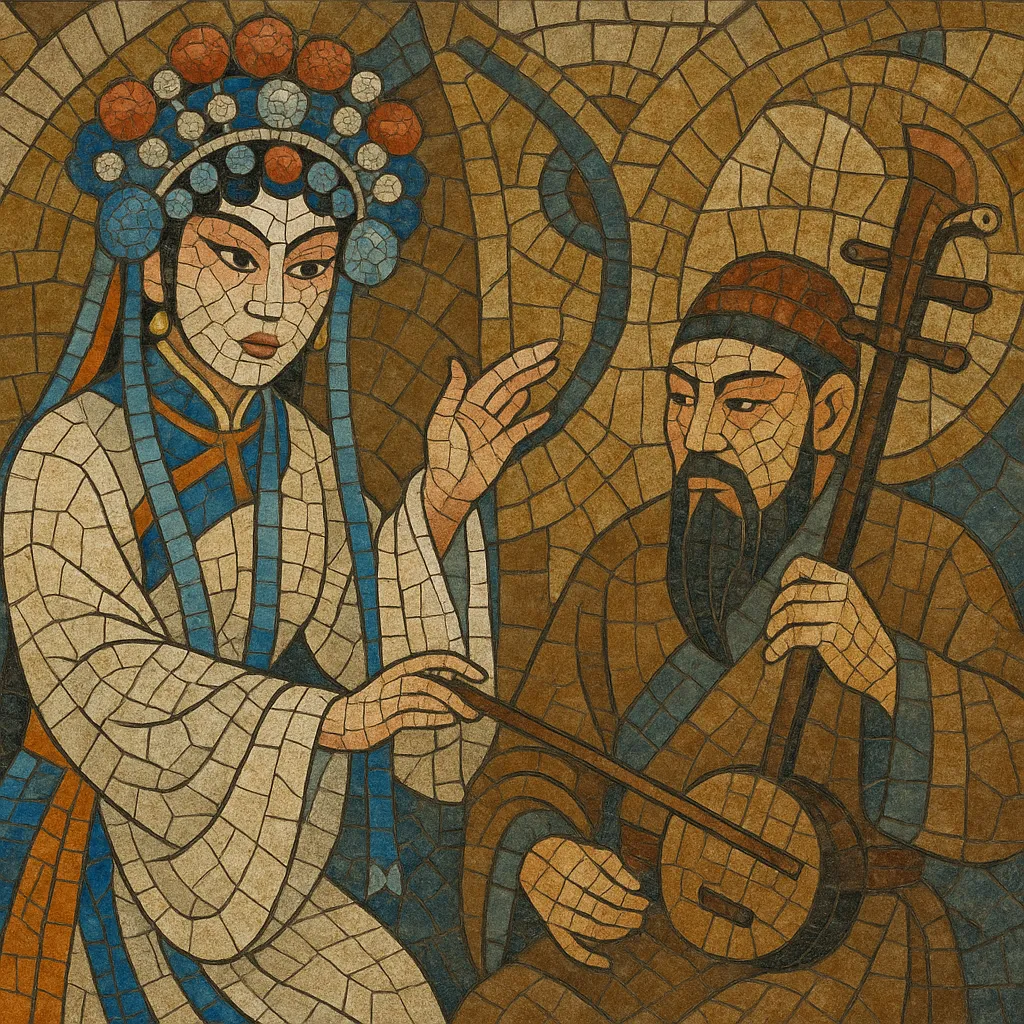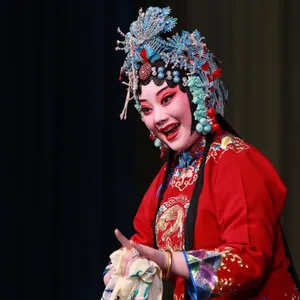Henan opera, also known as Yu opera (豫剧), is a major regional form of Chinese opera originating in Henan province and the broader Central Plains region of China. It is characterized by bright, ringing vocal delivery, vigorous rhythmic drive from clappers and drums, and melodies built on the banqiang (板腔体) system—most notably xipi and erhuang tune families.
The style combines stylized singing, speech (念白), dance-like movement, and codified role types (sheng, dan, jing, chou). Accompaniment typically features a lead fiddle from the huqin family (often banhu or erhu), suona, dizi, sheng, and a percussion battery centered on bangu, paiban, gongs, and cymbals. Performances are usually in Henan dialects of Zhongyuan Mandarin, lending the genre a distinctive regional color and direct, earthy expressiveness.
Henan opera took shape in the late 19th to early 20th century in Henan and neighboring areas of the Central Plains. It drew on the broader Chinese opera tradition (notably the banqiang-based xipi/erhuang system), local folk singing and storytelling, and the clapper-driven bangzi aesthetic common to northern operatic forms. Early troupes performed in markets and temple fairs, establishing a popular, close-to-the-people style and a repertory of historical and social dramas.
By the Republican era, Henan opera had developed stable tune types, role categories, and performance conventions, and leading artists began to codify vocal and acting schools. In the 1950s the genre achieved nationwide visibility through touring productions and film adaptations—most famously Chang Xiangyu’s Hua Mulan—bringing Yu opera beyond its regional base.
The 1960s–1970s saw repertoire reconfiguration under political pressures, while post-1978 reforms encouraged revitalization, new plays on contemporary themes, and stylistic refinement. Trained ensembles professionalized orchestration, staging, and role specialization, and recordings and broadcast media expanded the audience.
In the 21st century, Henan opera is sustained by provincial and municipal troupes, art schools, and community ensembles. It has been listed among China’s intangible cultural heritage, spurring documentation, education, and revival of classic plays. Collaborations with film/TV and concert adaptations have further diversified presentation while maintaining the genre’s core banqiang, clapper-driven vitality, and Henan-dialect expressivity.



